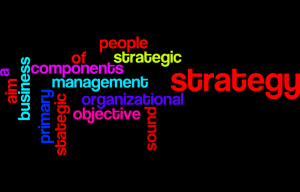In the book,[easyazon_link identifier=”0887307280″ locale=”US” tag=”earweaforyouf-20″]The E-Myth Revisited:Why Most Small Businesses Don’t Work and What To Do About It[/easyazon_link], by Michael E. Gerber, he talks about how once you understand the importance of working ON your business rather than IN your business, it is now time to put the pieces together for a strong business development program, or Franchise Prototype. This is important because if you want to sell your business to someone else, this prototype should be able to produce the same successful results for the new owner just like it did for you. The business development program consists of 7 distinct steps that are essential. (This is the final post of three parts)
If you have not read my previous post, The E-Myth: Your Business Is NOT Your Life, here is a brief summary.
Your business should stand out as a separate entity from you. You should not allow your business to consume so much of your time that you no longer have time for anything else that is important in your life, like family and doing fun things. Even though it is not mandatory that you turn your business into a franchise, Mr. Gerber however believes that your business will have the best chance of success if you set your business up using a Franchise Prototype. This prototype has certain rules that need to be followed such as:
1. Providing value to customers that is consistent and more than what they expect
2. Hiring employees with the lowest possible level of skill to perform necessary tasks
3. Having all job duties and responsibilities documented in Operation Manuals
4. Providing uniform predictable service to customers every time
The main point Mr. Gerber wants to make is that you have to think of your business as a business, NOT a job. You have to ask yourself some important questions, such as:

image courtesy of www.clker.com
- How can I get my business to work but work without me?
- How can I own my business and still be free of it?
- How can I spend my time doing the work I love to do rather than the work I have to do?
The only way that you can answer these questions is acknowledge that most often what needs to change is not only the business, but YOU– your attitudes and perceptions as to what a business is and how it works.
Components Of A Sound Business Development Program

According to Mr. Gerber, a successful business development program is comprised of the following seven steps ( I’ll give you the his definitions; you’ll have to read the book for more details about each step):
Step 1: Your Primary Aim
What do you want your friends, family and customers to remember about you and your business when you are no longer living? In other words, what do you want your legacy to be? The answer to these questions will determine what your primary aim is. Mr. Gerber states that without a primary aim, you will not be able to set your business up in a way that will help you achieve what you want your life to be. The primary aim is supposed to give you the vision that is necessary to bring your business to life and life to your business. With no primary aim, your life will basically seem to be without purpose and meaning.
Step 2: Your Strategic Objective
The strategic objective of your business is basically what your business has to do for you in order for you to achieve your Primary Aim. In other words, the strategic objective is a list of standards that can be used as a tool for measuring progress toward a specific goal.
Step 3: Your Organizational Strategy
Mr. Gerber states that a business without an organizational chart that shows who is responsible and accountable for what will eventually result in failure. All employees of a business, even if they can perform all necessary duties, cannot be held accountable for everything. Almost all successful businesses have an organizational chart that will list employee titles and what they are responsible and accountable for as well as who they report to.
Step 4: Your Management Strategy
According to Mr. Gerber, your management strategy is not based on hiring employees with the right “people skills” but rather having the right management system in place so that your customers are happy and keep coming back for more. The more automatic this system is, the more potential your business will be successful. For instance, having an Operations Manual with checklists for each main duty could be used to ensure that the same results are achieved every time, no matter who is performing the tasks on the checklist.
Step 5: Your People Strategy
The focus should not be on “getting your employees to do what you want them to do” but instead creating an environment that makes it more beneficial to the employees to do what is asked than not to do what is asked. In addition, it is also important that your employees understand the idea or why they need to do a certain task. Mr. Gerber also stated something that I never realized before. He said that the work we do tends to reflect who we are in life. For instance, if we do sloppy work, we tend to be sloppy inside. If we find our jobs boring, it’s because we are generally bored inside. This is definitely something to think about.
Step 6: Your Marketing Strategy
The most important thing to remember here is to market your business around what the customer wants, NOT what you want. It is also possible that what the customer really wants is actually different from what you THINK the customer really wants. The best way to find out what your customers really want is to know the demographics (who your customers are) and psychographics (why your customers buy). This is not an exact science, but thorough research must be done regularly in order to greatly reduce or eliminate the amount of guesswork. The most successful businesses such as McDonald’s and FedEx spend a lot of time and money on their marketing strategies.
Step 7: Your Systems Strategy
Mr. Gerber defines a system as a set of ideas, things, or information that interact with each other which in turn affect other systems. The systems strategy in a business consists of three kinds of systems:
- Hard System–inanimate or non-living, such as your computer
- Soft System–can be animate/living or ideas, such as your employee, or a script for a play
- Information System–provides information about the interaction between the hard and soft systems, such as inventory control and sales activity summary reports.
Conclusion
Hopefully by reading this post, I have helped you shed some light on how to get your business moving in the right direction–from failure to success. If you decide to implement the strategies discussed in this post as well as what was discussed in my previous two posts, The E-Myth: Your Business Is NOT Your Life, and The E-Myth: Why Businesses Fail to Succeed, success will not happen overnight.
However, the sooner you start working on turning your business around, the better off you will be. As always, I welcome any comments or questions you may have regarding my review of Mr. Gerber’s book, [easyazon_link keywords=”The E-Myth Revisited” locale=”US” tag=”earweaforyouf-20″]The E-Myth Revisited[/easyazon_link].
Deidre
PS,
By all means, get this book!


